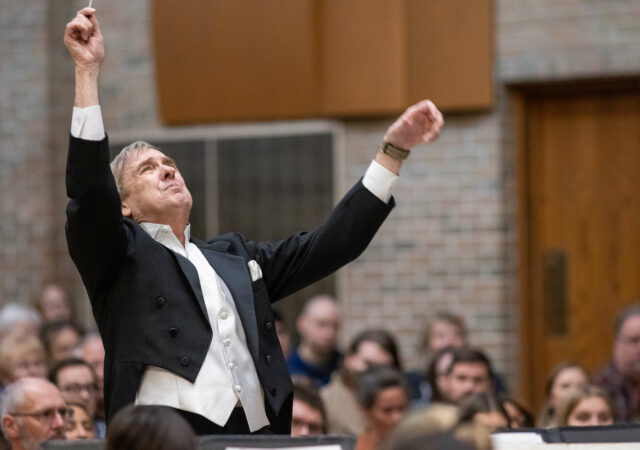HOUSTON—Delegates to the Missouri Synod convention here adopted three resolutions offered by the Floor Committee on Synod Structure and Governance (Floor Committee 8) early July 13.
One specifies that some LCMS Board of Directors members are to be nominated and elected regionally. Another authorizes that the Synod’s chief financial officer will be appointed, beginning now, rather than elected by the convention, which was previously the case. And the third calls for studying future district function and configuration.
The 64th Regular Convention of the Synod is meeting July 10-17 at the George R. Brown Convention Center under the theme “ONE People—Forgiven.” Among the approximately 3,000 participants are some 1,200 clergy and lay voting delegates.
More information about the three resolutions follows.
- Resolution 8-16A, “to nominate and elect to ensure regional representation on the Board of Directors,” follows this convention’s earlier approval of the concept of five regional groupings of districts. It was adopted by a vote of 760-402, after two proposed amendments failed to pass.
A “whereas” of the resolution notes that the Board currently is composed of 15 voting members “with no specific geographical representation, [and] should become more representative of the Synod’s varied geographical regions.”
Another “whereas” states that “it is necessary for board members to possess various skill sets to better enable them to make informed and educated decisions.”
With 14 voting members, the adopted makeup of the Board is as follows:
- five laypersons, elected to represent each of the five geographical regions.
- two ministers of religion-ordained, to be elected at-large from throughout the Synod.
- one minister of religion-commissioned, elected at-large from the Synod.
- two laypersons elected at-large from the Synod.
- up to three at-large laypersons appointed by the elected members of the Board of Directors “to obtain needed additional skill sets (legal, finance, investment, administration, etc.).”
- the president of the Synod.
Currently, Synod Bylaw 3.3.5.1 states that the Board’s 15 voting members are its four ordained ministers, one commissioned minister, eight laypersons, and the Synod president and secretary. In addition, there are two members who do not vote: the Synod first vice president and treasurer.
Several delegates offered amendments to the resolution that proposed different numbers for the lay and clergy makeup of the Board, although none of those was adopted.
Clergy delegate Rev. Mark Girardin of Centralia, Ill., spoke of the “need to be careful that we’re not moving into a purely corporate-bureaucracy setting. We’re about ministry,” he said, adding that he knows a number of pastors with business experience.
Dr. Wilbert Sohns, a member of the floor committee, reminded the convention that in 1917, when the Synod Board of Directors was established, it had one clergy and three lay members. He said that at that time, the Board was constitutionally charged with “supervision and management of the Synod’s business,” which is similar to the Board’s current responsibilities.
Resolution 8-39, to appoint the vice-president—finance/treasurer, specifies that the position will now be filled with appointment “by the Board of Directors of the Synod after consultation with and with the concurrence of the President of the Synod.”
It further stipulates that the vice-president—finance/treasurer “will serve a three-year renewable term of office at the direction of the Board of Directors.”
The resolution was adopted by a vote of 576-534, after a proposed amendment failed which would have removed “and with the concurrence of” from the “resolved” that speaks to consulting with the president about the appointment.
- Resolution 8-07, to study future district function and configuration, was adopted 693-474 as amended. The resolution directs the Synod President to convene a special task force to work in consultation with the Synod’s Council of Presidents and Board of Directors to submit to the next convention a recommendation that includes general principles of district viability; purpose and function of districts; improvements in district efficiency and coordination, including possible changes in the number and configuration of districts; and an implementation plan for recommended changes that will address staff and financial operations.
According to figures from Floor Committee 8, the estimated cost of the task force is $216,000.
Presidents of the two non-geographic LCMS districts addressed the convention before the vote. Rev. Carl H. Krueger, Jr., president of the SELC District, and English District President Rev. David P. Stechholz both said they did not oppose the study. Krueger said he was concerned that the task force take seriously the character of each district, and added, “What is good for the many may not always be good for the few.”
Stechholz said the resolution affects his district “quite deeply.” He asked that the task force not look narrowly at viability, but consider how non-geographic districts, working with geographic districts, can be collaborative. Stechholz also said he would like to see more discussion on the topic in the Council of Presidents.
Posted July 13, 2010




